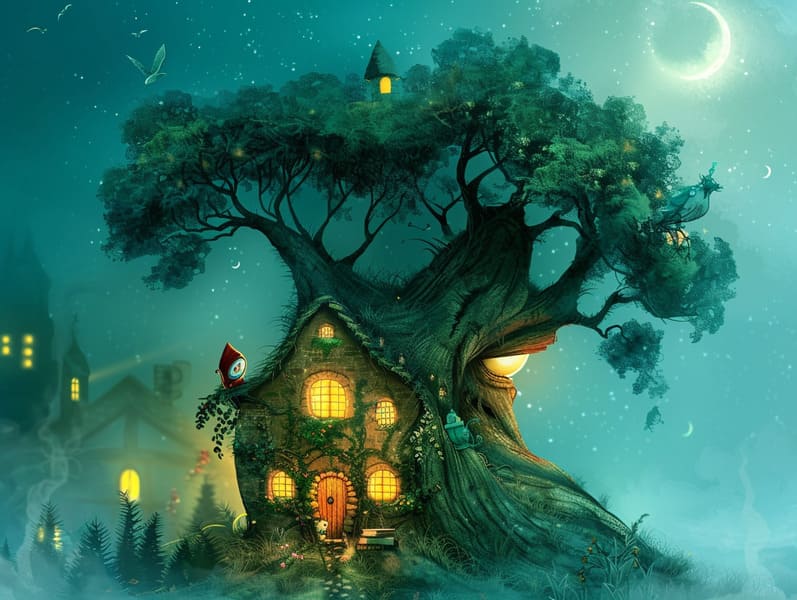The Birth of Famous Fairy Tales with Its Lasting Grandeur.
The Birth of Famous Fairy Tales with Its Lasting Grandeur.
Blog Article

Historical fairy tales have deep roots. These stories have been conveyed from one generation to the next ages before they were ever put on paper. They were born from a variety of backgrounds, including African traditions. They were initially transmitted among older generations, often carrying themes and messages aligned with the societal norms and beliefs of the time.
The famous Grimm duo, the two Grimm brothers, were among the first to collect many of these beloved fairy tales. Their compilation, "Grimm's Fables," included stories like "Cinderella," "Hansel and Gretel," and "The True Story of Snow White," which have since become essentials in the world of beloved fairy tales. Similarly, Hans Christian Andersen's fanciful fairy tales, such as "The Mermaid's Tale," and "The Little Duckling," have captured hearts worldwide, establishing their place in the pantheon of classic fairy tales.
Despite being ancient, these stories remain as applicable as ever, especially as nighttime stories for kids. These whimsical stories are now available in different formats, including artistically illustrated books, fantastical animations, and internet fairy tales.
Their lasting appeal can be ascribed to several fascinating points:
Key Lessons: Old fairy tales often impart important moral lessons. Narratives like "The Tale of the Boy Who Cried Wolf" teach the virtue of honesty, while "The Hare and the Tortoise" emphasize the values of resolve and meekness. These tales offer young ones clear distinctions between truth and falsehood, forming their moral compass in a kind yet profound way.
Empathy and Understanding: Traditional fairy tales frequently portray personalities facing struggles and tests, prompting kids to resonate with their struggles and root for their triumphs. For instance, "Beauty and the Beast" teaches us the virtue of looking beyond appearances to realize the true being of a character, enhancing awareness and understanding.
Cultural Insights: Many traditional fairy tales are imbued with the cultural contexts from which they sprang. Understanding these fairy tales can provide enlightening views into different historical contexts, fostering a sense of world appreciation and discernment.
Inventiveness and Fantasy: The magical elements in timeless fairy tales—enchanted forests—encourage children’s visions and dreams. These fairy tales take readers to mythical realms, fostering fantasy ideas and a sense of awe that continues a lifetime.
Old fairy tales are not only whimsical but also teaching. They function as delightful tools in building various mind and heart abilities in young ones. When classic fairy tales are spoken, they nurture language acquisition by introducing new vocabulary and intricate sentence structures. This practice also advances auditory skills and mental focus, as little ones hang on every word, expectant to see what happens next.
Furthermore, reflecting on the themes and characters of timeless fairy tales can nurture thought processes and intellectual skills. Children are instructed to notice patterns, anticipate outcomes, and catch on to cause and effect. These contemplations also assist kids utter their thoughts and feelings, promoting their emotional intelligence.
In today’s information age, the presence of digital storybooks has made these tales more available than ever. Web platforms and mobile apps provide large libraries of classic fairy tales that can be accessed or listened to anytime, anywhere. Fairy tales narrated are particularly well-received, making available an fun way for little ones to enjoy these captivating stories. Read-aloud stories and voiced videos guide characters and settings to life, often supplemented by captivating sound effects website and instrumentals that heighten the tale-telling adventure.
The timeless appeal of traditional fairy tales lies in their ability to transform to changing times while staying true to their key morals. Contemporary adaptations of these tales often integrate more diverse characters and modern settings, making them familiar to today’s audience. However, the main ideas of gallantry, empathy, and impartiality remain unchanged, continuing to resonate with readers of all ages.
Ancient fairy tales also offer a sense of comfort and predictability. They furnish a orderly narrative with a unmistakable beginning, middle, and end, often finishing with the settlement of conflicts and the triumph of right over wrong. This foreseeability can be comforting for children, giving a sense of constancy in an unpredictable world.
Old fairy tales continue to spellbind and edify new generations, maintaining their charm and impact in modern society. As kids' bedtime tales, they distribute a perfect blend of charm and enlightenment, sustaining moral values, empathy, and creativity. The existence of online fairy tales and the prevalence of fairy tales narrated make sure that these traditional tales remain within reach to new generations.
By continuing and circulating these fairy tales, we continue to cherish the rich tapestry of lore and cultural heritage. Whether you are perusing a vividly illustrated book, experiencing a cyber collection, or listening via an read-aloud book, the allure of timeless fairy tales is always within reach. These stories point out of the timeless power of fairy tales and its ability to tie us across centuries and lands.
No matter if you are exploring a colorful picture book, delving into a online collection, or hearing an audio story, the captivation of old fairy tales is always within reach.
These stories emphasize of the unchanging essence of stories and its ability to tie us across eras and regions, making a tie that enchants and educates alike.